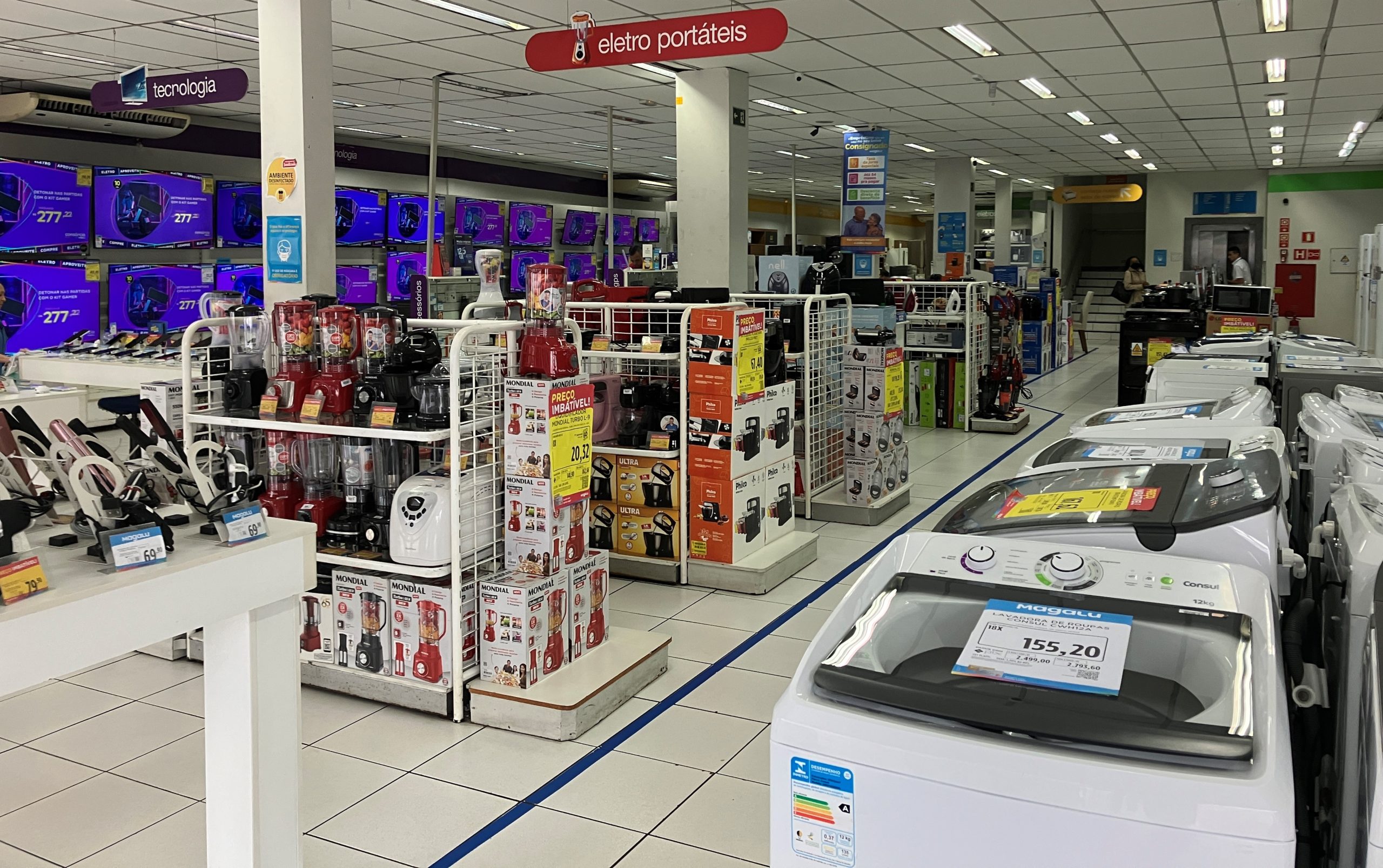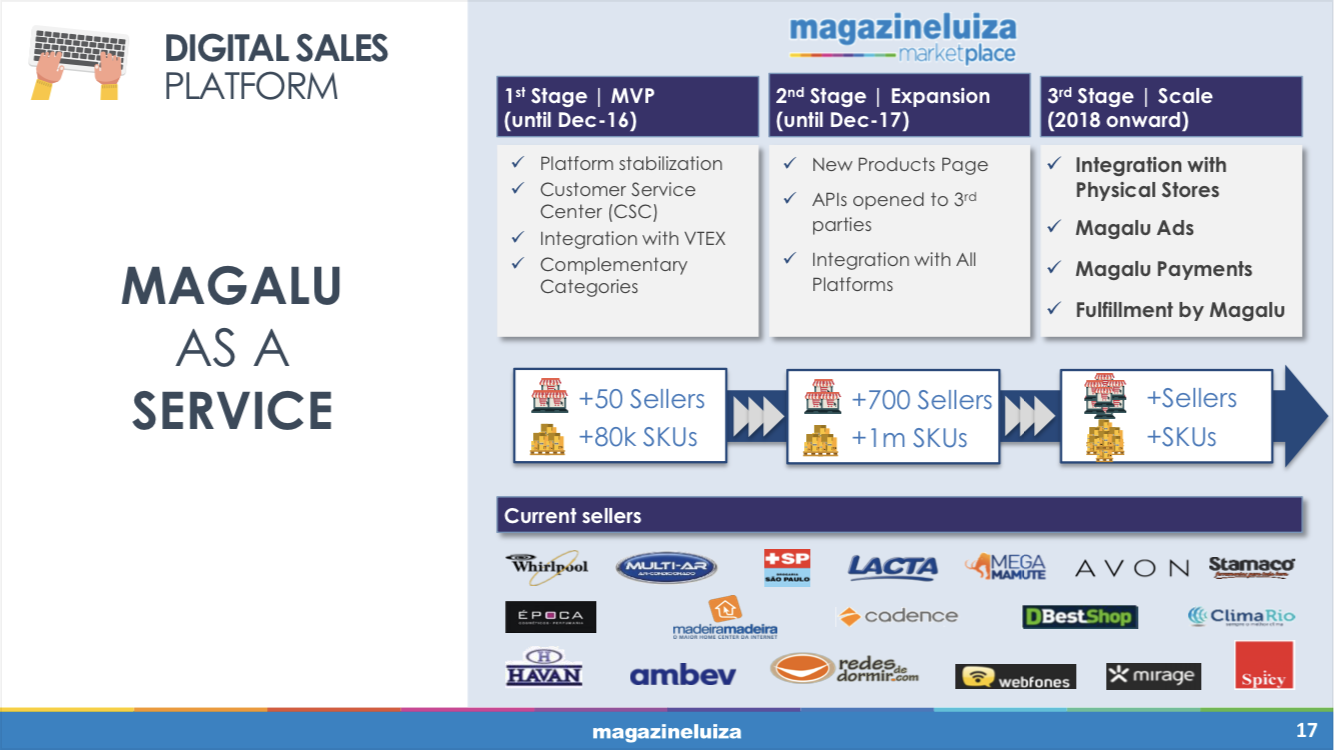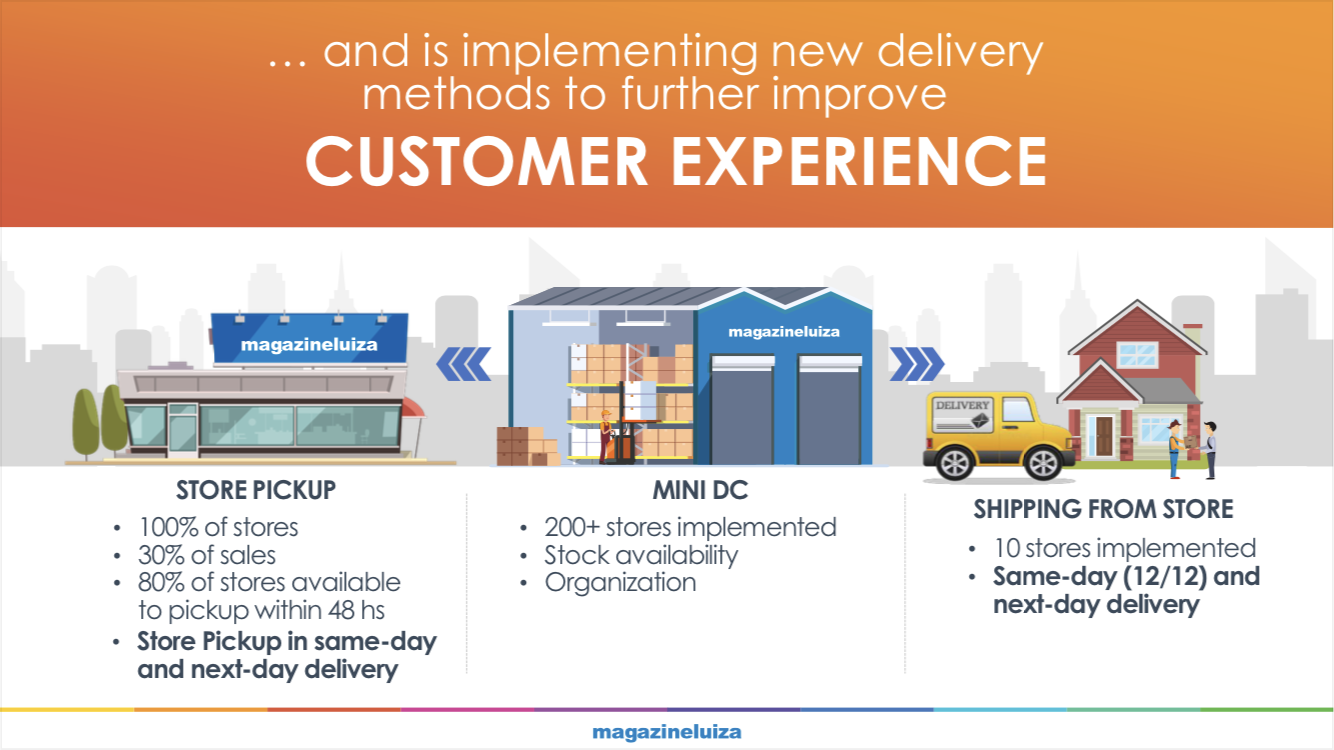Summary of this article:
- The future of retail is OMO, and retailers that merge the physical and digital worlds will be the most successful.
- Magalu / Magazine Luiza is a Brazilian e-commerce company that the largest online retailer in Brazil and the 10th largest e-commerce company in the world. It also has a physical presence with over 1,000 stores across Brazil.
- Alibaba has 3 three key lessons for Magalu, a Brazilian e-commerce company, on how to merge the physical and digital worlds to create a seamless customer experience.
***
Jack Ma coined the term “new retail” in China in 2016. The idea was to merge the physical and digital assets of retail into one seamless, data-driven customer experience. Really, his term “new retail” was about online-merge-offline (OMO), a phenomenon we can see in lots of industries.
Under the banner of new retail, Alibaba made several big acquisitions of physical retailers and launched lots of OMO initiatives. These initiatives, especially the Freshippo supermarkets, have been well covered by the media.
However, around the same time in Brazil, Magazine Luiza’s Frederico Trajano was also making major OMO moves. Having been recently elevated from ecommerce guru to CEO of his family’s retail business, he had put digital initiatives front and center at the company. And he was aggressively building in ecommerce and omnichannel. In particular, he was accelerating the company’s integration of its digital assets with its physical stores. Just like Alibaba, he was focused on OMO. But he was coming at it from the opposite direction as a historically physical retailer. Magazine Luiza (also called Magalu) is really just an awesome digital strategy story.
In Part 1 on Magazine Luiza, I outlined the company’s history, business model and main digital initiatives. Management publishes really good investor updates. And does a particularly good job of tracking metrics that they believe drive their growth. Those growth drivers are (mostly):
- Increasing the number of locations and the product selection.
- Increasing user convenience, especially delivery speed.
- Improving the user experience at every touchpoint (the stores, call center, delivery, etc.).
Here is one of their investor slides with some of their metrics.

And when it comes to Magalu’s larger strategic initiatives, there are four that are the big questions.
- Digitizing the core online and physical retail operations and experience.
- Building and growing the marketplace.
- Some surgical strategic moves in fintech and advertising.
- Potentially larger strategic moves toward either an ultimate B2C marketplace and/or toward a general infrastructure for commerce in Brazil.
And this is where there are some lessons from Alibaba’s OMO moves. Specifically for #1 and #4.
I think there are basically 3 lessons for Magalu from what Alibaba has been doing in OMO.
Lesson 1: Be More Aggressive in New Retail Formats
Alibaba went into physical retail as a pure online player. So they did not have any pre-conceptions about what retail formats they wanted to work in. This was really a strength and they were able to experiment in lots of areas. So they initially jumped into supermarkets, department stores, convenience stores, fashion stores, furniture stores, and mom and pop stores. They ended up doing some of this in-house (they opened Freshippo supermarkets) and they did billions of dollars of acquisitions (hypermarkets, department stores).
Magalu has been much less aggressive and experimental in their retail formats. They have mostly focused on digitizing their existing retail chains and have built from there. They have done some extensions that turn seller locations into distribution points but have not made any major jumps into other retail sectors or formats. They still mostly look like an omnichannel approach to their traditional stores.
Magalu’s core business has traditionally been large appliances (washing machines, refrigerators, stoves), technology (televisions, phones, etc.), portable electronics and home appliances (blenders). That contrasts with fashion and apparel-focused retailers like Lojas Renner. Here are some pictures of a current Magazine Luiza store in Sao Paulo.


CEO Trajano has described Magalu as a “digital platform with physical touch points.” And the physical touch points he is talking about are mostly these stores. And some delivery interactions. Most of Magalu omnichannel initiatives have focused on digitizing the current retail footprint. For example, they have “Buy online, pick up in store” (BOPIS). Ordering online and picking up at stores is a big driver of their ecommerce growth.
They also have lots of “in-store technology” initiatives, such as in-store product mapping. And increasing personalization, which is a big focus. In-store associates now use proprietary tools on mobile devices to handle sales. These type of initiatives make a big difference in the user experience and in checkout. In 2018, 100% of in-store sales were completed by sales associates using mobile devices.
This is all good but has major limitations.
We are now 5 years into OMO and it is clearly the most powerful in sectors like fashion, hypermarkets and groceries. Digitization and OMO in these areas create far more use cases. OMO in supermarkets has emerged as a particularly valuable position in terms of customer engagement and behavior. This is why Alibaba has been so aggressive in this area. They now view their supermarkets not just as a business line but as strategic infrastructure for their entire ecommerce ecosystem. They refer to their physical supermarkets as infrastructure. This is what gets them their closest location to their customers’ homes. It is the physical touchpoint that gets the most engagement. And these OMO supermarkets now act as retail spaces, service centers and forward logistics nodes for on-demand delivery. This is why Alibaba acquired Sun Art and its +400 hypermarkets.
Fashion is another OMO area that has proven to be particularly powerful in terms of consumer attention and engagement. Fashion ecommerce naturally ties to videos, social media, and livestreaming. That can result in dramatic increases in consumer engagement – something that is much more difficult in most of the Magalu’s current product segments.
I actually like Magalu’s “Omnichannel Marketplace”. They have really thought out how this competes with other models (see below). Not the focus on Net Promoter Score (NPS). But they need to be far more experimental and aggressive in physical retail formats.

Lesson 2: Become the Infrastructure for Brazilian Commerce. Not Just For Ecommerce.
Magalu is increasingly describing itself somewhat as a service for merchants, brands and retailers. It is opening up its retail locations and logistics infrastructure as a service for brands and merchants to the same degree they are used by its own internal sales. Note their use of “Magalu as a service”. This is similar to what Chinese JD used to call its “retail as a service”. 
I don’t really buy this idea. I think it is sort of half baked. This is really about creating an “infrastructure for commerce”. It begins with ecommerce on the platform but they becomes a general infrastructure. And that is what Alibaba has been doing for the past 2-3 years.
I have written about how Alibaba is now building a “new infrastructure for commerce”. Their goal is not just to make money from their ecommerce services. They want to take 1-3% of all commerce that happens in China. And that is a big opportunity.
By “new infrastructure of commerce”, they mean logistics, physical OMO retail and cloud / web services.
So that sounds a bit like “retail as a service” but is much broader. It includes basically everything a merchant, brand or retailer would need to sell their products in China (and increasingly internationally). Alibaba wants to be the infrastructure, regardless of whether these companies use their marketplaces or not.
Here is how Alibaba describing its biggest opportunities going forward.

I think Magalu is well-placed to make a similar strategic jump into being a general commerce infrastructure for Brazil. They already have the physical retail and the logistics. And they could do a partnership to provide the IT / web services. Here is how they describe their “integrated logistics platform”. You can see they are already halfway to the Alibaba infrastructure strategy. I think they just need to make the strategic jump and become a ecommerce company and an infrastructure company.


Final Lesson: Make a Strategic Move Into the Attention Business
Magalu faces the same existential threat as Alibaba, JD and the other ecommerce giants – which is the expansion of social media, video, and other attention giants into their space.
We already see this happening with the move of TikTok and WeChat into ecommerce in China. And these companies are racking up very big numbers very quickly. Kuaishou (the other TikTok) is also starting to do this move. And while Facebook and WhatsApp have only made weak moves into ecommerce, they have the potential to become major threats. And there is every reason to believe we will see this phenomenon happen in Brazil and Latin America. I suspect TikTok will be first.
This is the biggest strategic question going forward. Is the future of B2C going to be a combination of ecommerce, social media and entertainment? Is that the winning formula?
I think this is definitely true in areas like fashion and beauty. But it likely less true in areas like general merchandise and groceries. You could argue we are seeing a emerging fight between the giants of infrastructure (Alibaba, JD) and the giants of attention (ByteDance, social medial). And this is going to play out differently in different sectors.
If so, what is the strength of infrastructure vs. attention in various retail subsectors. Fashion? Beauty? Appliances? Groceries? Furniture? How is this going to impact Magalu?
In China, Alibaba has responded by moved into livestreaming with Taobao live. And they have some video businesses like Tudou. And there are doing lots of partnerships with creators operating on different platform. But they still don’t have a great response and WeChat in particularly is growing very rapidly in ecommerce.
Magalu needs to be far more aggressive in its content and attention strategies. That probably means partnerships and acquisitions. I would be talking to TikTok and Kuaishou in Brazil immediately. I suspect they are already doing this. We’ll see.
***
Ok. Those are my three OMO lessons for Magalu. It is really a fascinating company and is one of the best digital businesses out there. It is also the one that is most of the radar of international investors. I would highly recommend you dig into this company.
That’s it. Cheers, Jeff
————
Related articles:
- An Introduction to Magazine Luiza / Magalu, the Online-Merge-Offline (OMO) Pioneer of Brazil (1 of 2) (Tech Strategy – Daily Article)
- Why I Really Like Amazon’s Strategy, Despite the Crap Consumer Experience (US-Asia Tech Strategy – Daily Article)
- 3 Big Questions for GoTo (Gojek + Tokopedia) Going Forward (2 of 2)(Winning Tech Strategy – Daily Article)
From the Concept Library, concepts for this article are:
- OMO Platforms
- New Retail / Online Merge Offline (OMO)
- Brazil
From the Company Library, companies for this article are:
- Magazine Luiza / Magalu
——-
I write, speak and consult about how to win (and not lose) in digital strategy and transformation.
I am the founder of TechMoat Consulting, a boutique consulting firm that helps retailers, brands, and technology companies exploit digital change to grow faster, innovate better and build digital moats. Get in touch here.
My book series Moats and Marathons is one-of-a-kind framework for building and measuring competitive advantages in digital businesses.
This content (articles, podcasts, website info) is not investment, legal or tax advice. The information and opinions from me and any guests may be incorrect. The numbers and information may be wrong. The views expressed may no longer be relevant or accurate. This is not investment advice. Investing is risky. Do your own research.
